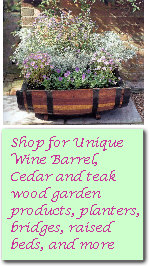Why Mulch?
The term "mulch" refers to materials spread or left
on the soil surface as protective layers, whether organic or inorganic, loose
particles or sheets. Mulches are used primarily to
-
Suppress competing vegetation (weeds, grass).
-
Warm the soil to promote earlier spring growth.
-
Delay soil freezing and prevent frost heaving in winter.
-
Protect plants from damage by equipment.
-
Reduce soil erosion and loss.
-
Hold moisture.
-
Reduce evaporation and runoff.
-
Reduce rot and other soil-borne diseases.
-
Enhance garden and landscape appearance.
-
Make garden and landscape maintenance easier.
Organic mulches also
-
Improve the soil's condition through decomposition.
-
Add nutrients such as nitrogen, phosphorus, sulfur,
calcium, and trace elements.
|
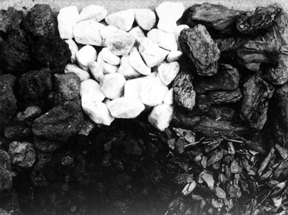
Figure 1. Loose mulch materials can be organic and
inorganic, and of small or large particle size. Match the mulch type and
size to the landscape situation.
|
Mulch Selection and Types
Consider individual mulch characteristics when making a
selection. Durability and aesthetics are important, as well as availability and
cost.
Sizes
The smaller the mulch particle size and the thicker the mulch
layer, the greater the possibility of weed growth in the mulch layer. Aim for
2"-4" of settled depth (more for larger particles, less for smaller),
replenishing when needed (Figure 1.). Weed growth is more likely in organic than
in inorganic mulches.
Loose Mulches
Bark is readily available in bags or bulk. Usually made
from pine, cypress, or hardwood trees, it is resistant to decomposition.
Research indicates that pine chips last longer than hardwood, but most bark
mulches must be reapplied annually. Windblown seeds often germinate in bark
mulches and necessitate cultivation or herbicide application.
Wood chips are often available from local sources.
Chips larger than 3" are least likely to compact. Caution must be used,
as chips that have not been composted or "aged" can be toxic to tender
plants during the decomposition process. Wood shavings can also be used for
mulching.
Chip and sawdust mulches from some woods, such as walnut
and cedar, produce phytotoxic (plant-killing) chemicals and should be avoided.
This toxicity phenomenon is called allelopathy.
Pine strawis available in bales or bulk. Pine needles
do not compact and add a natural look to gardens. Pine needles do, however,
decrease soil pH by adding acidity, and can induce nitrogen deficiency which
shows up as poor growth and light-colored or yellowish-green foliage that
appears on the older leaves first.
Sawdust is attractive and readily available. It
decomposes slowly and can improve the quality of clayey and sandy soils. Sawdust
does crust and form a mat, however, and must be broken up frequently to prevent
water shed. Fresh sawdust temporarily ties up nitrogen as it decomposes, and
therefore nitrogen fertilizer should be incorporated before mulch application.
Some rotted sawdusts are very acidic and may need liming. A 3"-6"
layer of sawdust is useful for mulching pathways.
Hulls from cocoa, buckwheat, and cottonseed are useful
around shrub borders, flower beds, and rose gardens. Decorative, with a richly
textured appearance, hulls are expensive and blow or wash away easily
necessitating frequent replenishment. Cocoa hulls are high in phosphorus and may
be toxic to certain plants.
Lawn clippings can be used as mulch, but a mulching
mower is generally preferred so that grass clippings are recycled directly back
onto the lawn. Applied as a thin mulch layer or mixed with other materials, lawn
clippings add some nutrients to the soil without heavy compacting or excessive
heat. Do not use grass clippings if herbicides have recently been applied.
Leaves should be partially rotted and dried before
using because large wet leaves can form mats that shed water. Leaves may harbor
diseases, insects, rodents and weed seeds. Oak leaves are acidic while maple
leaves are alkaline. Walnut leaves are toxic and should not be used. Composted
leaves are effective as a soil amendment, alone or mixed with grass clippings.
Straw can be used as loose mulch in a 6"-8"
layer for temporary protection, such as for grass seed germination. Straw
decomposes slowly and is a good source of humus, but there are several problems
with straw. Straw has a low nitrogen content, and can harbor insects, diseases
and weed seed. If tree beds are mulched with straw, rodents are attracted to the
seeds and may feed on the bark when the seed is gone. In addition, straw is a
potential fire hazard. Do not confuse straw with hay, which should never be used
as a mulch because of its high weed seed content.
Peat moss is expensive, and when used as mulch the
surface dries out quickly making it easily wind blown. Once dry, peat moss is
very difficult to rewet and tends to shed water. Peat moss also encourages
shallow rooting into the mulch layer which reduces drought tolerance. Peat moss
is a better choice for amending the soil of large planting areas than for
mulching.
Crushed stone and Gravel (types of inorganic
mulches) are best used over black plastic or landscape fabric in permanent
locations, such as walks or driveways, or in areas where no additional planting
is anticipated. Some limestone-based rock mulches may add alkalinity and/or
trace elements to the soil, making monitoring for possible pH changes necessary.
Sheet Mulches
Plastics are recommended for use only around annual
flowers. Plastics should not be used in permanent landscape installations
because they restrict air and water movement. In addition, plastics should not
be used on steep slopes or in areas with poor drainage. Clear or black plastic
should be at least 4 ml. thick and anchored in some way. Plastics are
inexpensive and readily available, but become brittle and break up with age and
should therefore be covered by loose mulch.
Geotextiles, often called landscape fabrics or weed
barriers, are more durable than plastics (Figure 2.). Unlike plastics,
geotextiles permit air and water movement into the soil. Perforated, woven or
spunbonded, they are usually made of polypropylene. They help control weeds and
maintain even soil temperatures. For better appearance and to prevent UV light
degradation, a shallow layer of organic or inorganic mulch should be placed atop
all geotextiles. When covering geotextiles with mulch, immediately remove any
weeds that germinate in the mulch to keep the weed roots from penetrating the
fabrics. Quality landscape fabrics should last at least 5 years.
|
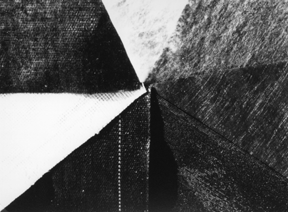
Figure 2. Various types of geotextiles can be used as
sheet mulches to enhance the weed suppression of loose mulches.
|
Mulch Management
Apply loose and sheet mulches at planting time. To prepare an
area to be mulched, remove perennial weeds and level the area. Soil should be
moist but not wet. Around young trees, extend the mulch from near the trunk out
at least to the drip line (the ground area below the tree canopy (Figure 3.).
Established lawn trees will benefit from a mulched area extending 2'-3' out from
the trunk. In all cases, keep the area adjacent to the trunk free of mulch to
help prevent damage to the tree trunk from excess moisture, insects and
diseases, and voles and other pests. Excessive mulching can also stimulate
undesirable shallow rooting (Figure 4.). If herbicides will be used in
combination with mulches for enhanced weed control, apply the mulch first, then
the herbicide over the mulch.
|
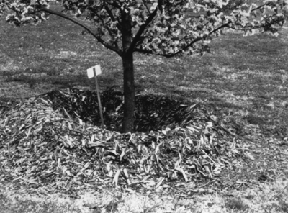
Figure 3. A mulch well can be constructed at planting
time to help hold water over the root ball of the tree, but the height
of this well is excessive.
|
|

Figure 4. Piling excessive mulch against plant stems
can stimulate undesirable shallow rooting in the mulch layer.
|
If allergic reactions may occur, wear a pollen mask while
handling organic mulches to avoid inhaling fungal spores that may be present in
the mulch.
Common Mulching Mistakes
|
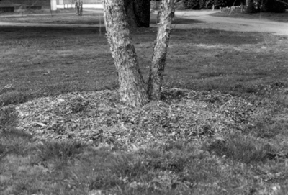
Figure 5. A properly mulched landscape tree.
|
|
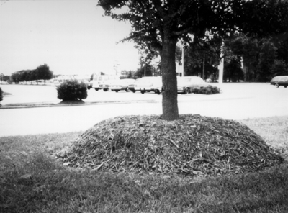
Figure 6. An improperly mulched tree. Bark layer too
thick and piled up against the stem.
|
-
Mulch layer too thick. (Figures 5. and 6.)
-
Mulch layer too thin.
-
Mulch applied too close to plant stems.
-
Mulch not extended out to plant drip line.
-
Mulch materials not properly composted.
-
Weeds not eradicated prior to mulch application.
-
Plastics used under mulch around trees and shrubs.
![]() Gardeners' Corner
Kids'
Garden
Sustainable Garden
Contact Us
Gardeners' Corner
Kids'
Garden
Sustainable Garden
Contact Us![]()

